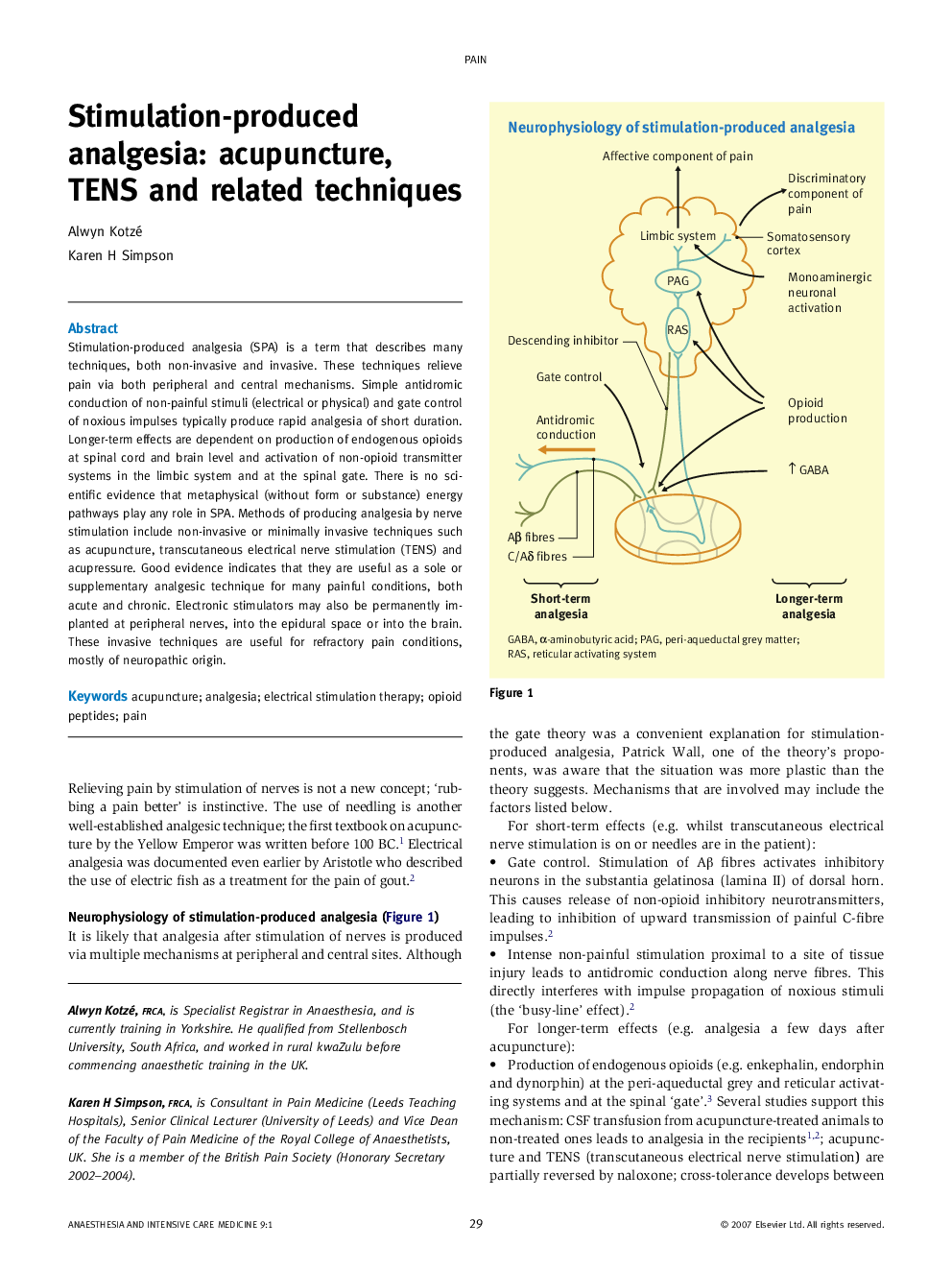| Article ID | Journal | Published Year | Pages | File Type |
|---|---|---|---|---|
| 2743119 | Anaesthesia & Intensive Care Medicine | 2008 | 4 Pages |
Stimulation-produced analgesia (SPA) is a term that describes many techniques, both non-invasive and invasive. These techniques relieve pain via both peripheral and central mechanisms. Simple antidromic conduction of non-painful stimuli (electrical or physical) and gate control of noxious impulses typically produce rapid analgesia of short duration. Longer-term effects are dependent on production of endogenous opioids at spinal cord and brain level and activation of non-opioid transmitter systems in the limbic system and at the spinal gate. There is no scientific evidence that metaphysical (without form or substance) energy pathways play any role in SPA. Methods of producing analgesia by nerve stimulation include non-invasive or minimally invasive techniques such as acupuncture, transcutaneous electrical nerve stimulation (TENS) and acupressure. Good evidence indicates that they are useful as a sole or supplementary analgesic technique for many painful conditions, both acute and chronic. Electronic stimulators may also be permanently implanted at peripheral nerves, into the epidural space or into the brain. These invasive techniques are useful for refractory pain conditions, mostly of neuropathic origin.
